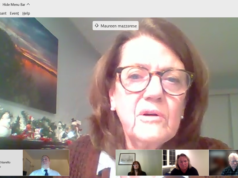From a young age, students are often molded to believe that the English language consists of unchanging rules that aren’t meant to ever be broken. Anne Curzan’s “Says Who? Teaching and Questioning the Rules of Grammar” challenges this and reminds us that language is not as concrete as some scholars may (want us to) think.
To begin, Curzan makes an important distinction between descriptive grammar, which helps writers and speakers create coherent ideas, and prescriptive grammar, which “[tells] writers (and speakers) what they should and should not do” (871). In Curzan’s view, though descriptive grammar “allows speakers to communicate systematically and meaningfully,” prescriptive grammar often includes unnecessary rules and limitations on usage (871). She argues that “all speakers have the right to make informed decisions about when [prescriptive grammar] rules are appropriate for their writing,” instead of blindly following the rules without question (870).
This argument illustrates the central theme of her article; subsequent sections explore how and by whom grammatical rules are defined and why the way these definitions are constructed makes it acceptable to break them.
One major tenet of Curzan’s argument is that the grammatical rules that many people consider to be “set in stone” were actually introduced by specific people and subsequently adopted by “grammarians” (872) across America. For example, she highlights that the use of they as a singular pronoun was first condemned by author Lindley Murray during the eighteenth century, and that this condemnation was accepted by numerous scholars until it became the norm. Over time, Curzan says, rules like this make their way from suggestion to requirement, often without sufficient justification.
Curzan points to the notion of Standard English and the institution of the Usage Panel as major reasons for the pervasive nature of prescriptive grammar. She asserts that Standard English is just one of many dialects of English and should not be placed on such a high pedestal by educators. She also explains that the Usage Panel, which publishes “usage notes” in dictionaries to help writers construct their sentences and claims that it is not the sole authority on grammatical questions, is often followed without question.
Curzan also highlights three myths about Standard English and prescriptive grammar: that language changes corrupt the language, “prescriptive grammar always makes sense” (875), and “Standard English is better than other varieties of English” (876). Throughout the article, Curzan effectively disproves each of these by using logical reasoning and specific examples.
The final section of Curzan’s paper is an important call to action. She writes, “Teachers need to educate themselves about the fundamentals of language and open up genuine conversation in their classes about prescriptive usage rules and grammar more generally” (877). In Curzan’s view, a teacher who is uninformed about the reasons behind certain grammatical rules is only doing their students a disservice.
In today’s social climate, the themes of Curzan’s article can be applied far beyond the discipline of English. Though the article’s intended audience was originally limited to English professors and other PMLA readers, people of all disciplines and walks of life could benefit from reading it.
With the increased prevalence of transgender and non-binary individuals who identify themselves with a singular they pronoun, a closer examination of the singular they rule, as well as many other prescriptive rules, is crucial for our society to move forward. Making articles like Curzan’s more accessible to the general public has the potential to help accelerate this necessary progress.
###
Works Cited
- Curzan, Anne. “Says Who? Teaching and Questioning the Rules of Grammar.” PMLA, vol. 124, no. 3, 2009, pp. 870–879. doi:10.1632/pmla.2009.124.3.870.








